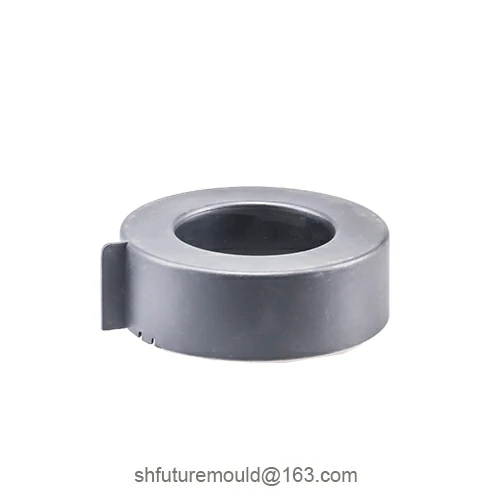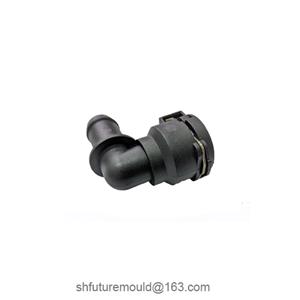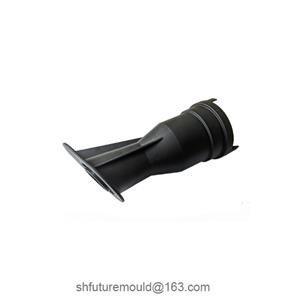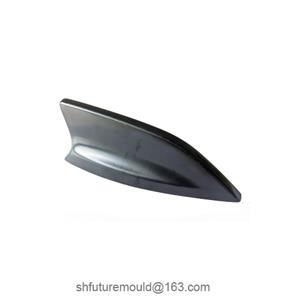How to Choose the Right Injection Molding Machine
Choosing the right injection molding machine to match your mold is crucial for successful plastic part production. Several factors need to be considered when matching the machine and mold to ensure optimal performance and product quality.
Product Factors:
Product Dimensions (Length, Width, Height, Wall Thickness): The injection molding machine should have a platen size that can accommodate the mold dimensions and provide sufficient clearance for mold opening and closing.
Product Weight: The machine's shot size, which is the maximum amount of plastic it can inject in one cycle, should be greater than or equal to the product's weight.
Product Shape: Complex shapes may require longer cycles and higher injection pressures, necessitating a machine with appropriate capabilities.
Product Precision Requirements: For parts with tight tolerances, a machine with high precision and control accuracy is essential.
Cavity Layout (Multi-Cavity Molds): If the mold has multiple cavities, the machine's shot size and cycle time must be able to handle the production of various parts simultaneously.
Mold Factors:
Mold Dimensions: The mold dimensions should match the machine's platen size and ensure proper alignment during clamping and injection.
Mold Structure: Complex mold designs may require specific features on the machine, such as additional ejector strokes or core pulling mechanisms.
Mold Opening Method: The machine's opening stroke should be sufficient for the mold's opening mechanism, whether hydraulic, mechanical, or a combination of both.
Plastic Factors:
Plastic Type: The machine's plasticizing unit should be compatible with the type of plastic being used, considering factors like melting temperature, viscosity, and required melt temperature.
Plastic Flowability: Highly viscous plastics may require a machine with a powerful plasticizing unit and longer injection cycles to ensure proper filling of the mold.
Melting Temperature: The machine's temperature control capabilities should be able to reach and maintain the required melting temperature for the specific plastic.
Decomposition Temperature: The machine's control system should prevent overheating the plastic beyond its decomposition temperature, which can lead to material degradation and part defects.
Injection Molding Machine Factors:
Shot Weight: The machine's shot size should be greater than or equal to the weight of the product, including runners and sprues.
Clamping Force: The machine's clamping force should be sufficient to generate the necessary locking pressure to prevent mold opening during injection and maintain part quality.
Opening Stroke: The machine's opening stroke should be greater than or equal to the mold's maximum opening height to allow for easy part ejection.
Injection Speed: The machine's injection speed should be able to fill the mold cavity at a rate that prevents premature cooling and ensures proper part formation.
Holding Pressure and Time: The machine's holding pressure and time should be sufficient to maintain pressure on the molten plastic after injection to allow for packing and cooling.
Cycle Time: The machine's cycle time, including all stages of the molding process, should meet the production rate requirements.
Energy Consumption: The machine's energy efficiency should be considered to minimize operating costs and environmental impact.
Control Precision: The machine's control system should have the precision to accurately regulate parameters like injection pressure, speed, and temperature for consistent part quality.
Other Factors:
Budget: The cost of the injection molding machine should be considered within the overall project budget.
Floor Space: The machine's size and required floor space should be compatible with the available production area.
After-Sales Service: The reputation and availability of after-sales service from the machine manufacturer are crucial for ongoing maintenance and support.
General Steps for Selecting an Injection Molding Machine
Define Product Requirements: Clearly define the product specifications, including dimensions, weight, shape, precision, and production volume.
Gather Product, Mold, and Plastic Information: Collect detailed information about the product's design, mold specifications, and plastic properties.
Determine Injection Molding Machine Parameters: Calculate the required shot size, clamping force, opening stroke, injection speed, cycle time, and other machine parameters based on product and mold specifications.
Compare Different Injection Molding Machines: Evaluate various machine models from different manufacturers based on performance, features, price, and reputation.
Select the Suitable Injection Molding Machine: Choose the machine that best meets the technical requirements, production needs, and budget constraints.




